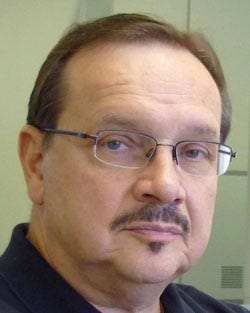January 29, 2013
By partnering with a manufacturer that specializes in cleanroom services, OEMs can cut costs and rely on the supplier's specialized expertise, according to Harold Faig, CEO of MedPlast (Tempe, AZ). MPMN: What advantages do medical device OEMs enjoy by partnering with contract manufacturers that offer cleanroom capabilities?
MPMN: What advantages do medical device OEMs enjoy by partnering with contract manufacturers that offer cleanroom capabilities?
Faig: OEMs enjoy numerous benefits by partnering with outsourcing companies with cleanroom expertise. Operating a medical device manufacturing cleanroom requires capital equipment and expenses, annual certifications and maintenance, regular testing, cleanroom attire, and personnel trained to maintain and operate within the cleanroom environment. By bearing these expenses, the contract manufacturer can help the OEM to reduce costs while providing specialized services beyond the OEM's range of expertise.
MPMN: What cleanroom infrastructure, systems, and equipment skills should the medical device OEM expect of a contract manufacturer?
Faig: While cleanroom infrastructure and mechanical systems are common in the manufacturing world, they differ depending on the cleanroom class. In most cases, the contract manufacturer builds and certifies the cleanroom, but only then does it prove its true expertise and skills by developing maintenance and environmental testing programs and by training cleanroom personnel. The OEM should expect that the contract manufacturer has implemented a robust monitoring program, a thorough cleaning schedule, regular training programs, and competency assessments.
MPMN: What trends and advances in cleanroom manufacturing should the medical device OEM bear in mind when seeking a vendor?
Faig: The first question an OEM should ask is what cleanroom class is required to manufacture the medical device in question. Depending on the function, regulatory requirements, and sterility demands of the device, different levels of cleanroom manufacturing may be required. While flexible, modular options have been developed for less-stringent environments, modular cleanrooms are not an option for more-demanding operations. The medical device OEM should also be aware of the latest trends in measurement and filtration equipment, which are continuing to improve as new materials and methodologies are developed. Nevertheless, despite improvements in mechanical efficiency, physical design, and filtration, the need to filter and pressurize cleanroom air results in high energy-consumption levels. Hence, the most noticeable trend in the cleanroom manufacturing and assembly space is the emergence of efficient 'green cleanrooms' and advances in smart cleanrooms--computer-monitored facilities in which mechanical equipment can be adjusted as necessary to optimize performance.
Related: Outsourcing Outlook on Cleanroom Manufacturing and Assembly: Services
About the Author(s)
You May Also Like


